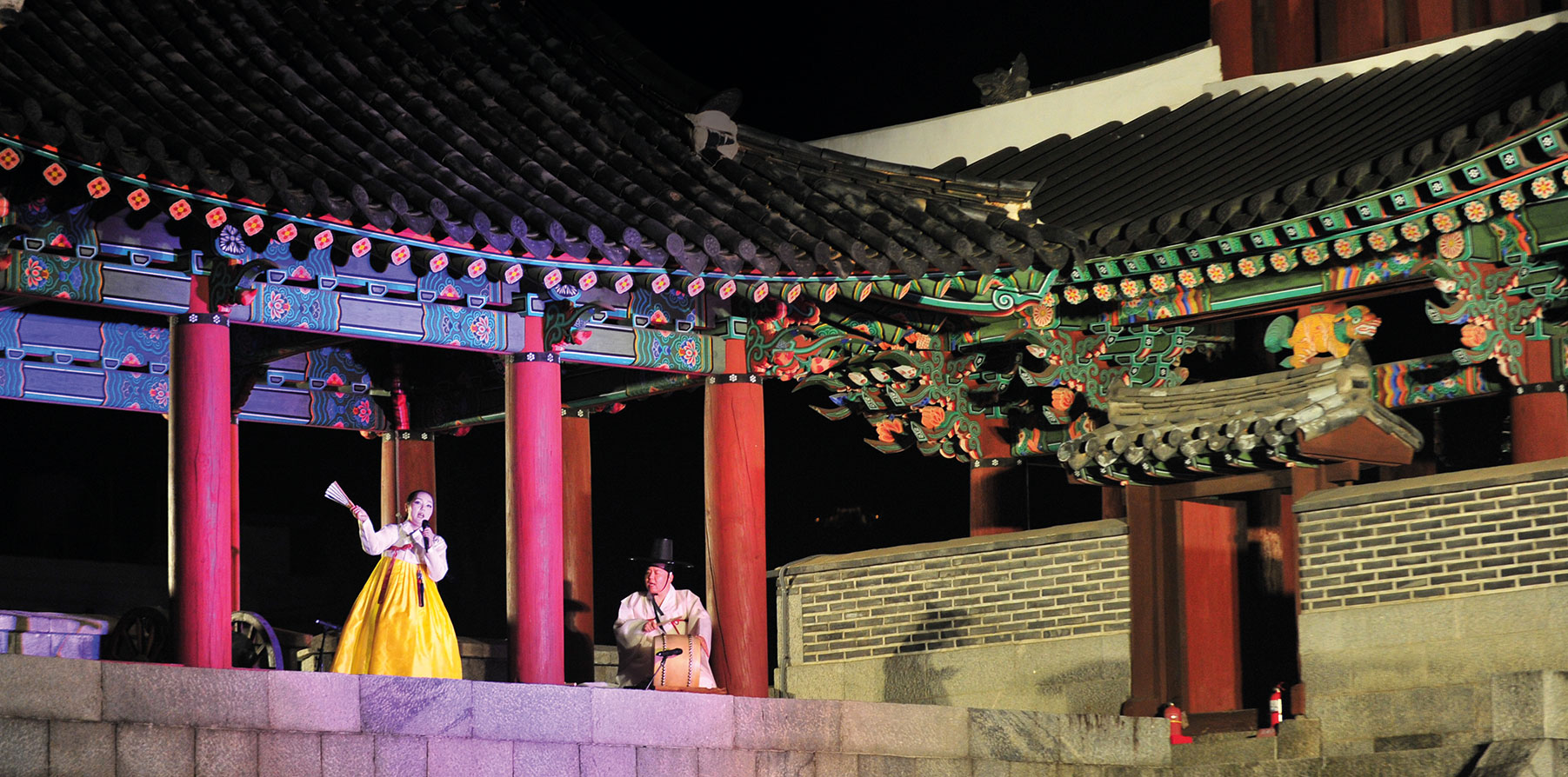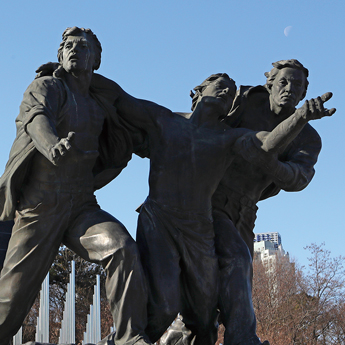Culture Vulture
Storytelling for the Masses
Pansori
Witnessing a traditional Korean musical performance like pansori (one-person lyrical opera) is like taking a journey back in time, not to mention experiencing a traditional performing art that goes back several centuries.
Written by • Tim Alper
Korean literature has a deep and rich history. But before modern times, its most notable works were all written by members of the social elite – over-educated scholars, rich nobles or erudite monks.
So what about ordinary folk?
Though many timeless and centuries-old classics of Korean literature, such as “Hong Gil-dong” and “The Cloud Dream of the Nine,” have survived through the ages, most commoners had neither the time nor the skills to read them.
But it would be wrong to assume that Korean peasants lived lives devoid of literature until modernity. Instead, many historians say another form of storytelling once thrived in Korean villages: oral literature.
Modern people, equipped with smart technology, books and the internet, have little or no need for oral storytelling skills, but in days gone by, such knowhow was indispensible. Villages around the world often depended on bards, singers, actors and other professional storytellers to keep them entertained. Some of the acts were even blended with true stories, mythology and religious messages.
In most societies, oral literature is almost extinct. Fortunately in Korea, it lives on through pansori.
Rich History
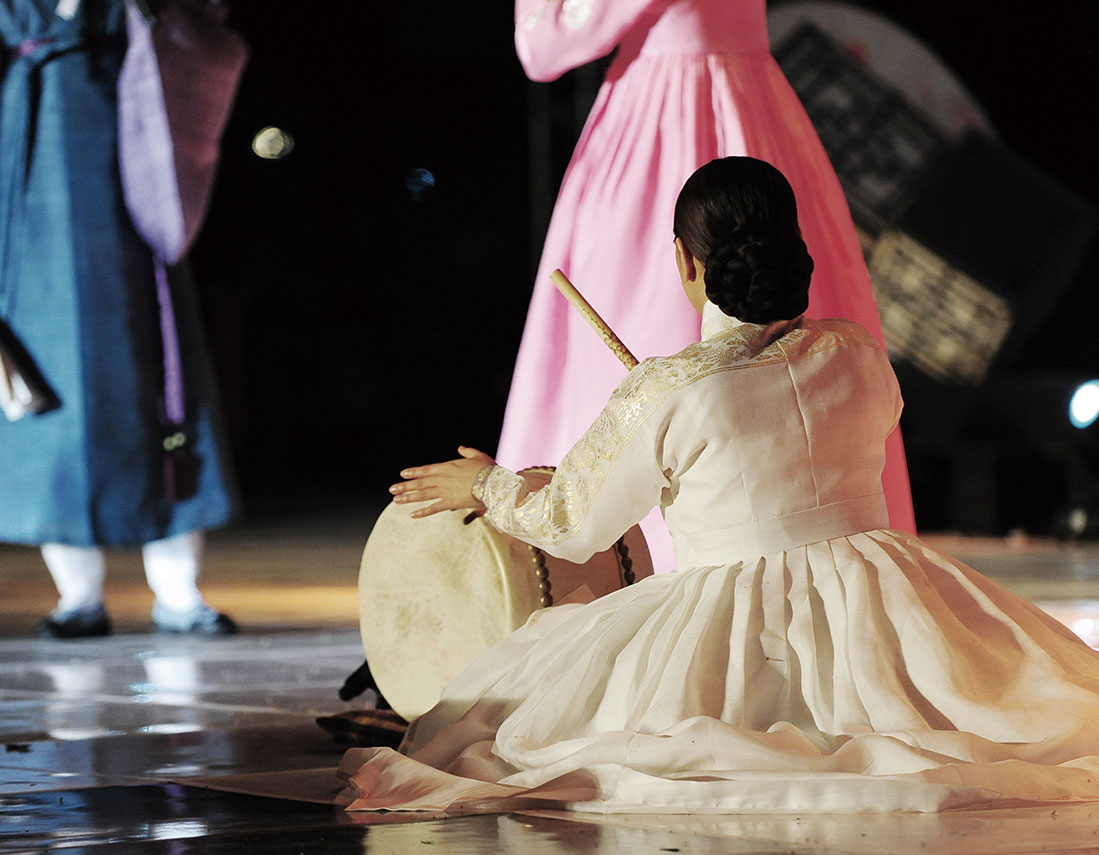
The accompaniment to pansori (one-person lyrical opera) is played with the buk (drum). Exclamatory comments are made freely during a performance, enlivening the mood. © shutterstock
Pansori is one of the most misunderstood performing arts in the world. It is often translated into English as “Korean opera,” but nothing could be further from the truth. While the first opera composers and performers cut their teeth in the courts of the Medicis, pansori’s pioneers were certainly not classically trained. They were most likely wandering shamans, street vendors and street performers whose other skills might have involved exorcism, juggling or tightrope walking.
While opera follows strict musical patterns and is based on a written score, pansori is not even music per se or conventional storytelling. Instead it is a bewitching and largely improvised blend of the spoken word, often atonal singing, acting and audience participation.
Watching a pansori performance is like nothing else on Earth, which is perhaps why UNESCO inscribed it on its list of Intangible Cultural Heritage in 2008.
Almost all performances begin with the singer speaking casually to the audience and exchanging pleasantries with a seated drummer. The first time I watched pansori, I expected the drummer to keep a beat as the singer performed, but this turned out not to be the case.
Mostly, the drumbeats are added as a form of punctuation to the developing story. One of the drummer’s main functions is driving audience participation and responding with affirmative shouts of agreement to the singer’s questions.
Rather than sit in revered silence like at a Western opera house during a performance, a pansori audience is lively. If you appreciate the singer’s work, it is considered good etiquette to shout “Jalhanda!” (Well done) or make other sounds of approval, particularly when the drummer leads the cheers.
Musical sections are followed by passages of monologue, and singers quite often break character to make observations about the crowd, the weather or current affairs.
Most singers take to the stage dressed in Hanbok (traditional Korean attire), though many fusion performers wear more modern designs. Most of them carry a traditional fan with them that they tap rhythmically or snap open to add dramatic effect.
All of this can seem quite arbitrary to the first-timer, but it takes great skill to perform a well-balanced blend of speech, acting and singing while keeping the audience captivated.
Heyday
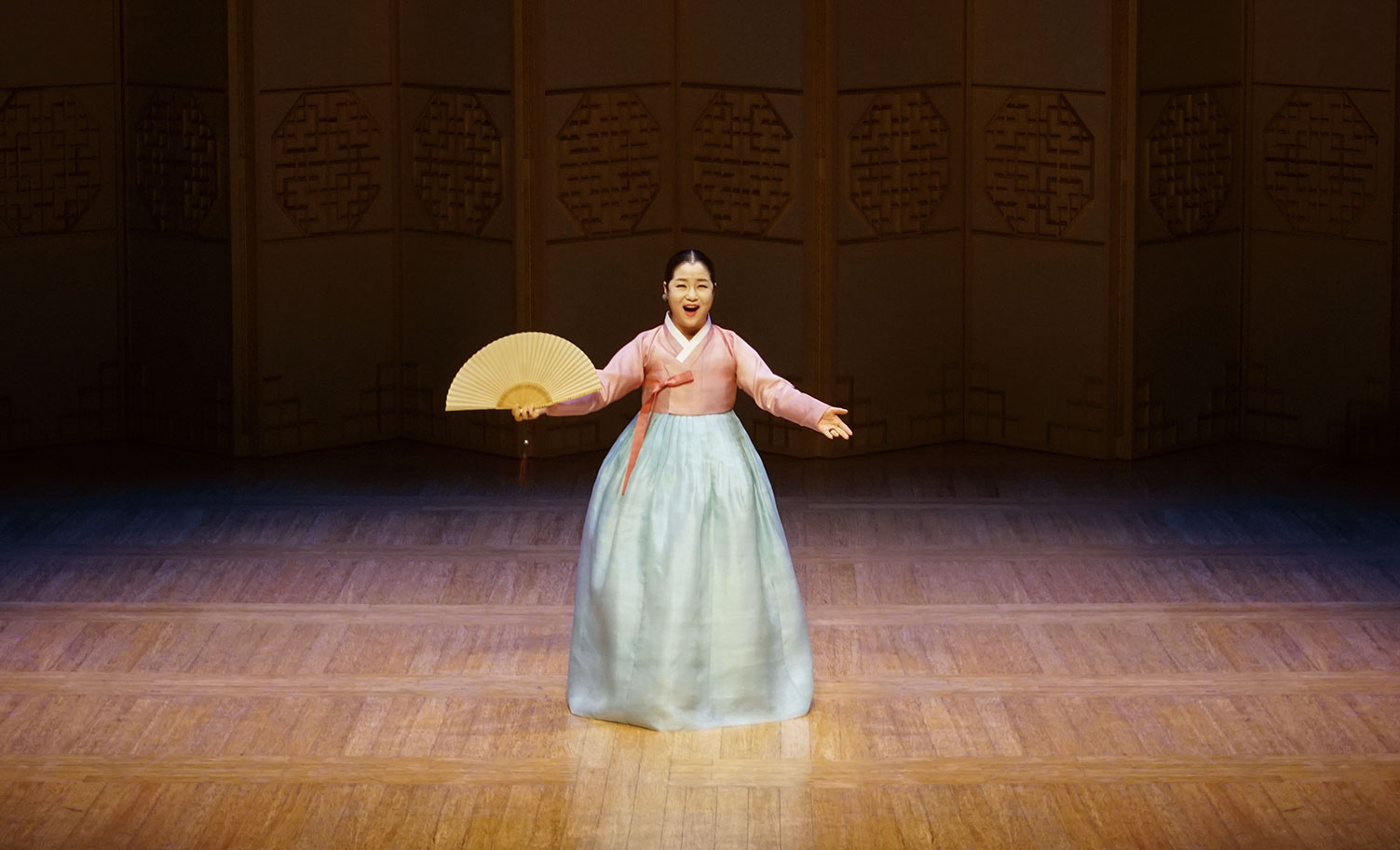
The handheld paper fan is spread at climactic moments of the performance and folded when the intensity subsides. © National Gugak Center
Almost nothing is known about the origins of pansori, mainly because Korean historical records were not written by the lower-class audiences of this artform. Just like the masked dances of Hahoe, early pansori was not performed at court, so most nobles knew little if anything about its existence.
The genre might have existed for centuries before it was finally appropriated by the upper class. The first record of its existence came in the mid-18th century, when noble writers started making written records of pansori stories such as “Chunhyangga (The Story of Chunhyang),” which remains the most popular work of its kind performed in Korea today.
Noble patronage took a more vivid form in the early 19th century, when classicist and scholar Shin Jae-hyo became the first writer to record multiple stories and develop a theory of pansori. He also championed the role of women in the genre, mentoring Jin Chae-seon, the daughter of a shaman who was Korea’s first female pansori maestro – and arguably its first superstar.
The pansori performers of yesteryear, historians say, were probably exclusively male. But Jin galvanized a generation of female performers. Her legacy is still felt today, as a large proportion of Korea’s most notable pansori singers are women.
Jin was a native of the Honam region comprising the city of Gwangju and the provinces of Jeollabuk-do and Jeollanam-do in the southwestern region of the country; the area soon became a hotbed of pansori culture. Even today, cities in the region like Jeonju remain the spiritual homes of the genre, and purists flock from afar to attend performances there.
Thanks to Jin and Shin, this once-ignored form of storytelling eventually became the talk of the town in Korea’s most powerful households. In the late 1800s, Jin was appointed court singer of the Joseon prince regent.
Shortly afterward, the first pansori vinyl recordings were pressed, eventually finding an entirely new audience of home-based listeners.
Despite seeing a boom in the 19th century, the performing art’s meteoric rise came to an abrupt halt when the Japanese colonized the Korean Peninsula in 1910 Imperial Japan frowned on the genre and attempted to stamp it out to promote Japanese-language forms of entertainment.
Historians say at least 12 pansori stories originally existed, most of which would take up to 10 hours to perform in their entirety, yet only five remain. Most modern performances and recordings of pansori are thus mere fragments chopped down to bite-sized chunks, with some taking a mere 30 minutes to complete.
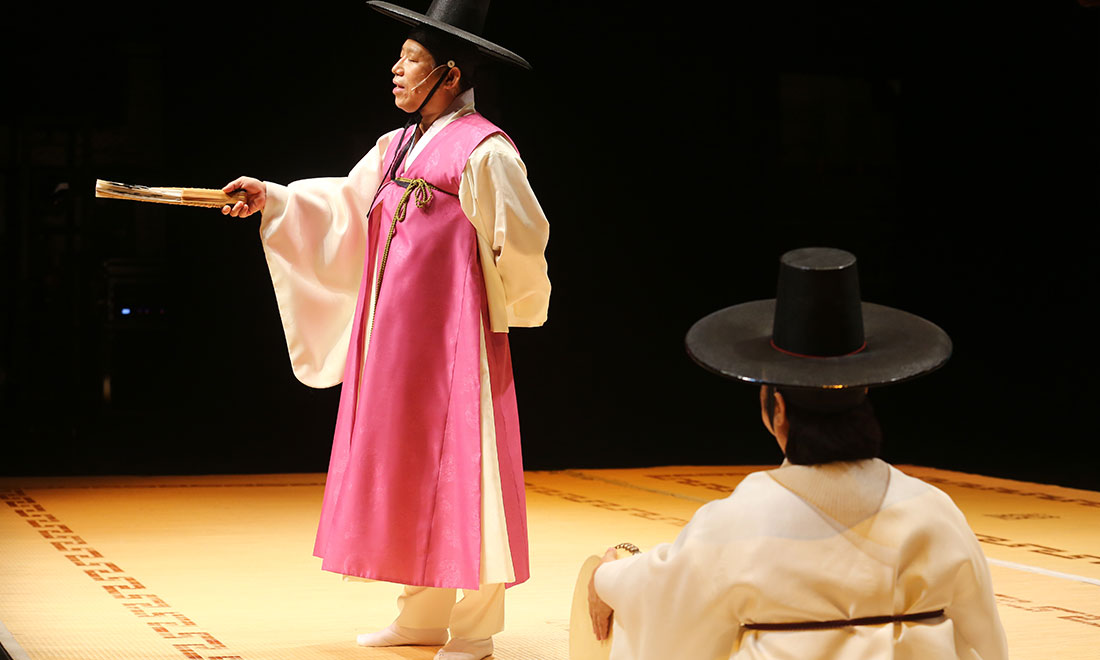
© National Gugak Center
Status Today
Even if modern takes on pansori are likely considerably dissimilar to the performances of old, they are no less enthralling.
The five remaining stories are unfailingly heartbreaking, particularly “Simcheongga,” the tale of a devoted daughter’s efforts to help her blind, ailing father. They also contain moments of great levity, with nuanced and sometimes more obvious humor. “Heungbuga,” a moral fable of two farmer brothers, is arguably the most light-hearted of the quintet.
But most importantly, the stories breathe new life into once-forgotten myths and shed light on the often-ignored lives of Korean peasantry.
To see age-old tales of villagers and their myths, the joy and pain performed by modern Korean pansori artists are not a glimpse of a past shrouded in mystery but a headfirst dive right into the beating heart of a lost world.
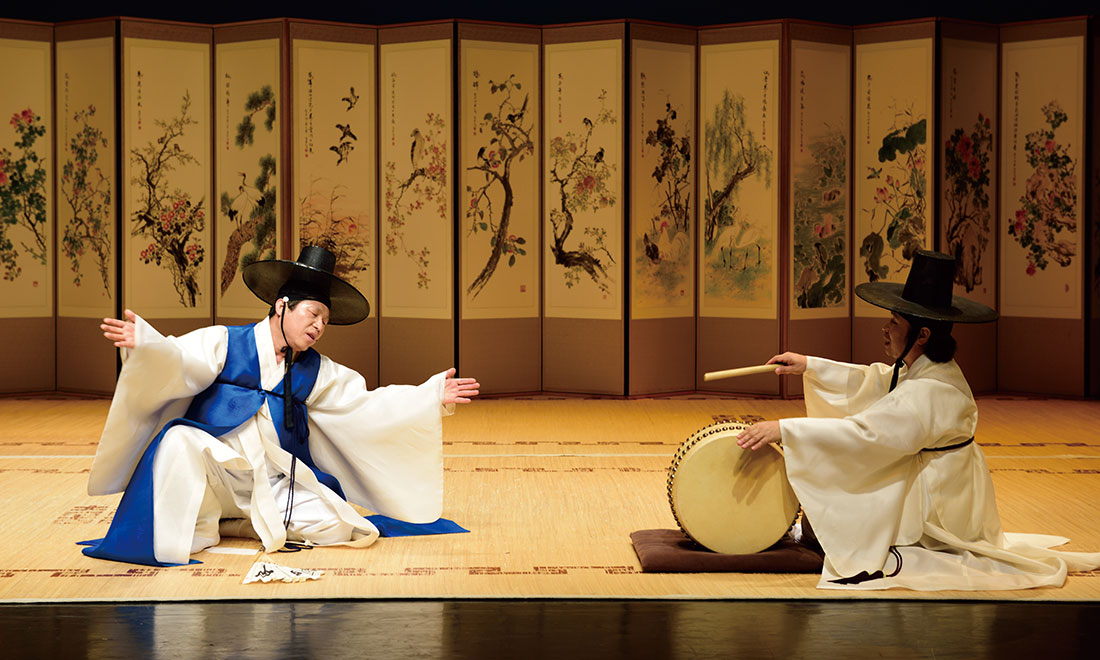
The performance “Jeokbyeokga” is one of the five surviving stories of pansori. © National Gugak Center

